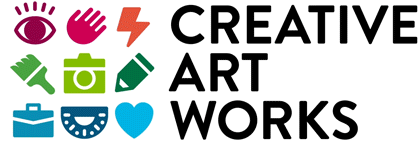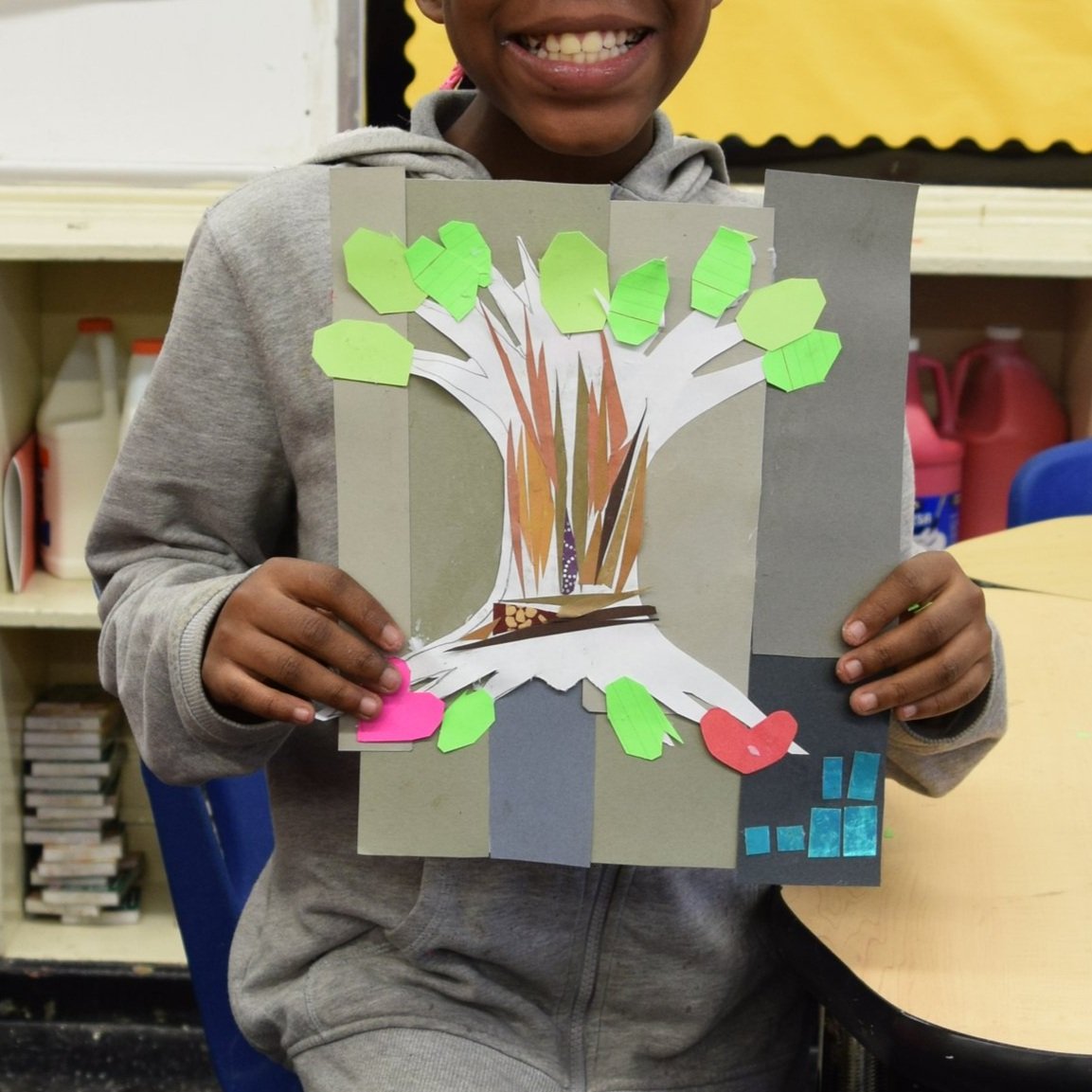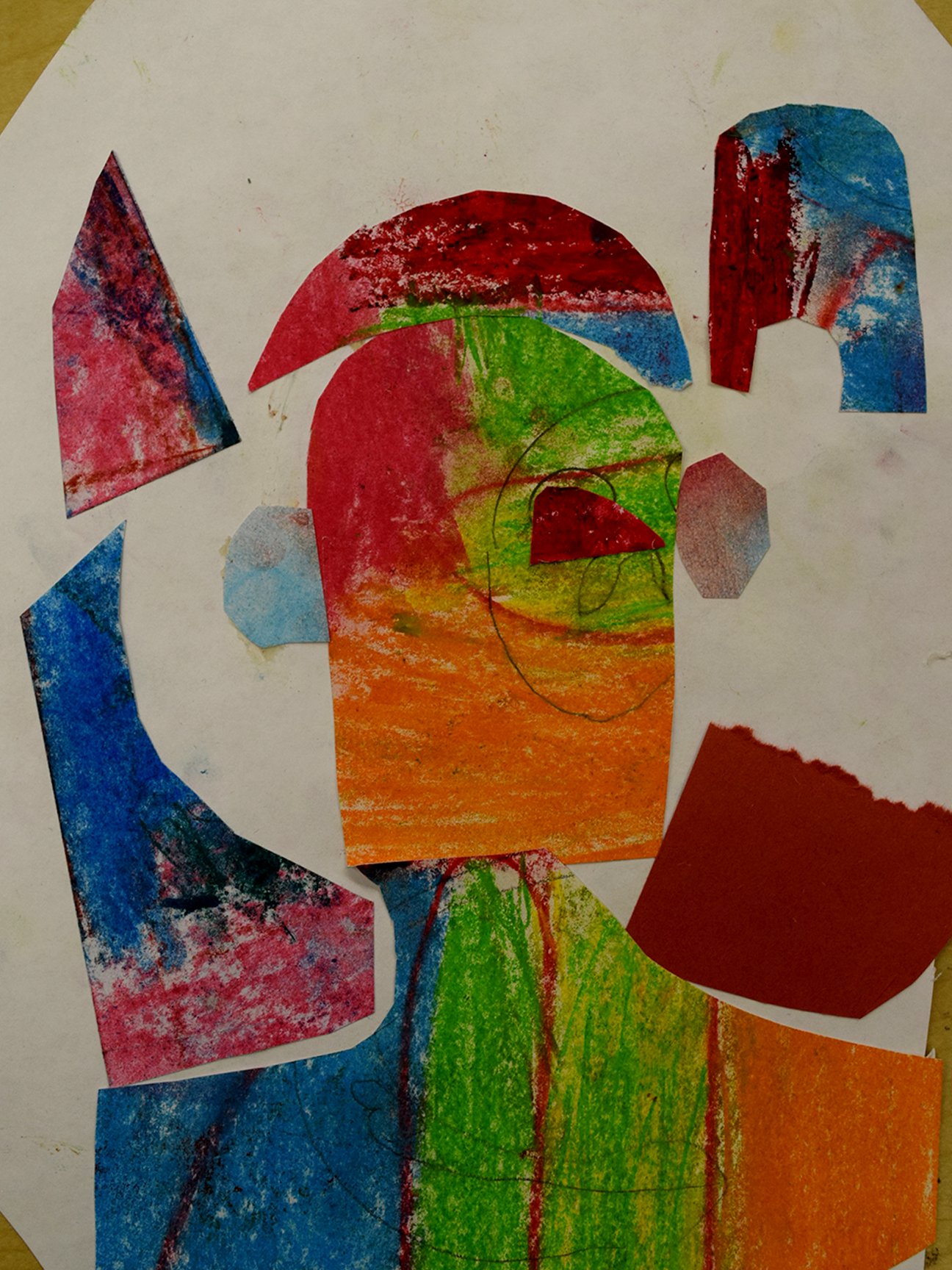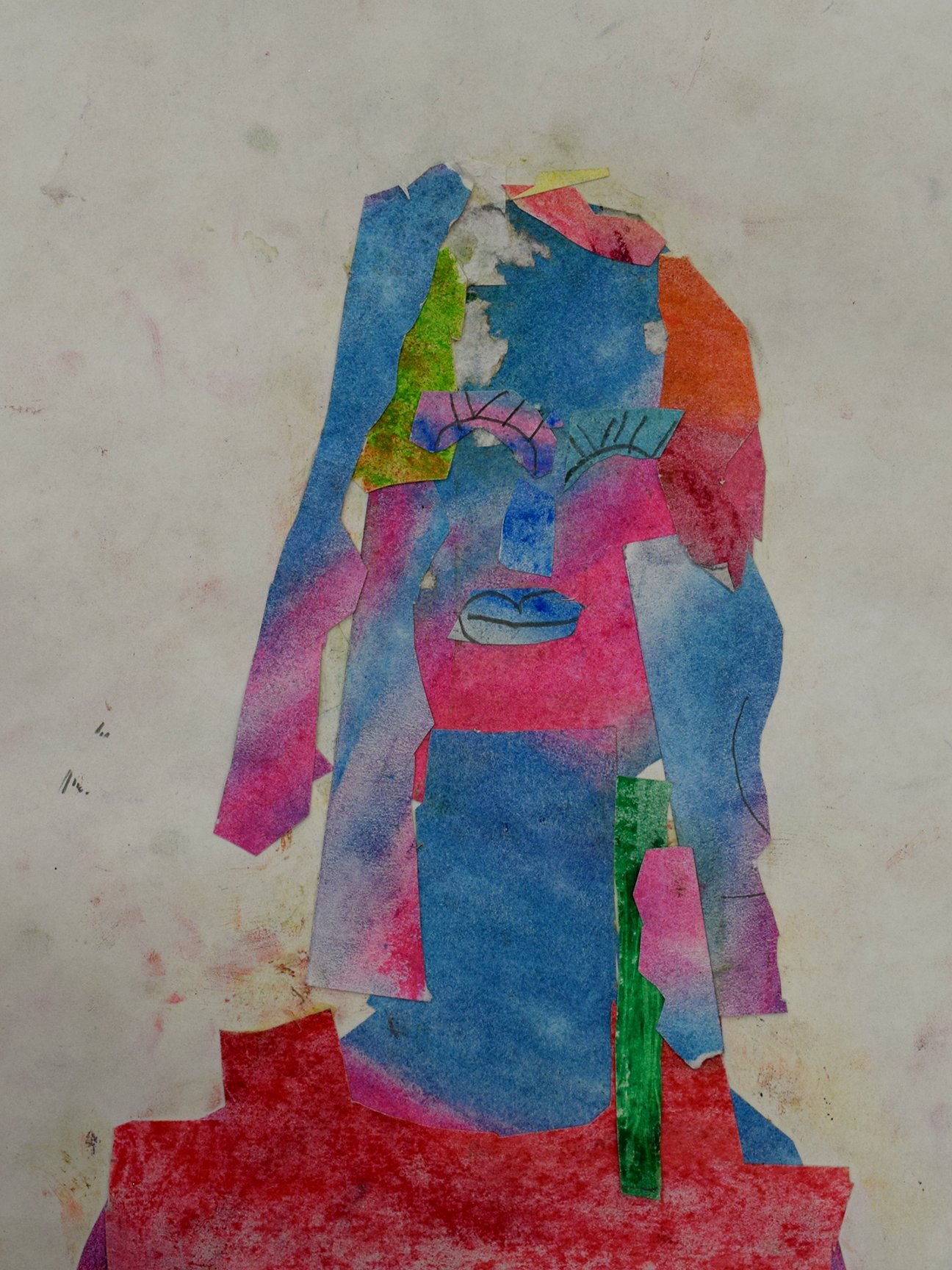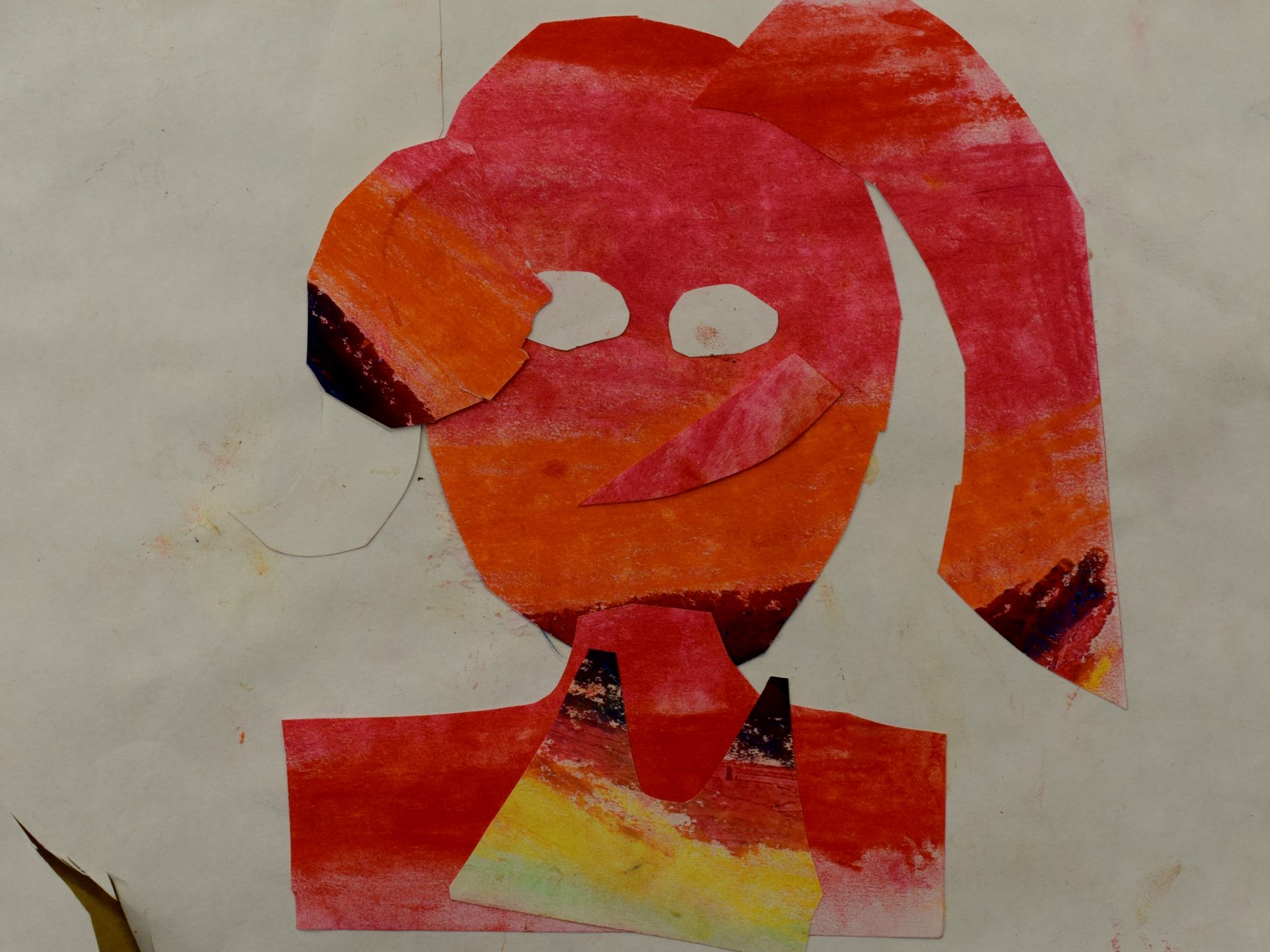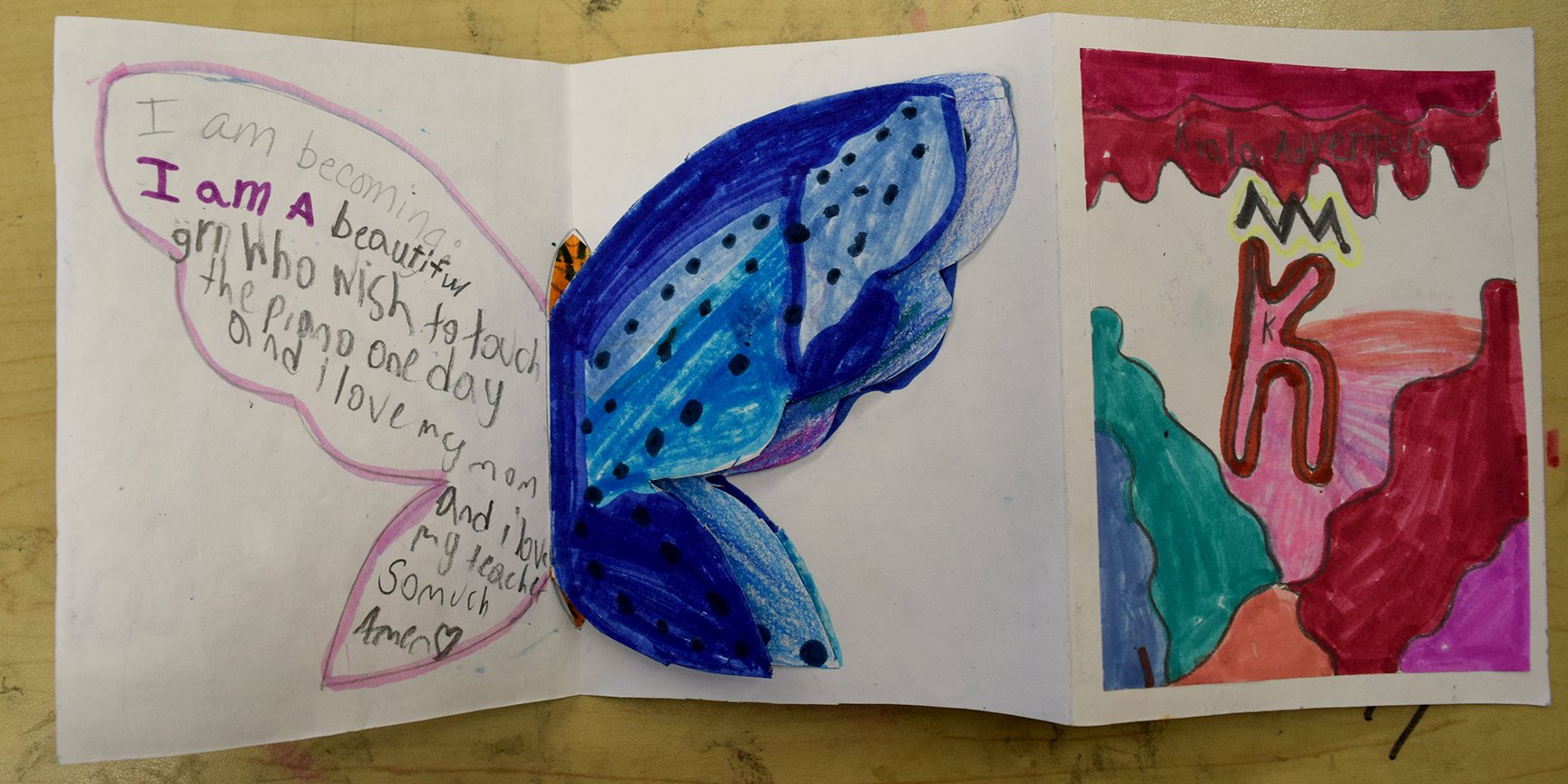Developing a Sense of Agency
CAW Teaching Artist Abby Walsh
Creating a social justice poster that makes a concise yet persuasive argument is challenging on many levels. The idea has to be expressed clearly and concisely. One needs to understand the difference between logical and emotional appeals. Finally, the artwork has to be arresting, beautiful, or provocative to support the message. It’s a tall order for an experienced artist, let alone a grade school student. Yet at PS 4 in The Bronx, a CAW in-school program, taught by Teaching Artist Abby Walsh, is providing students in grades three to five with opportunities to develop the necessary skills and understanding to advocate for the causes they believe in.
A decoupage project challenges students to cut our complex shapes. It also offers a chance to make a personal values statement.
The first challenge is to develop basic artistic skills. Over the past few years, CAW Teaching Artist have noticed a general decline in both fine and gross motor skills at all ages and at all schools. Abby attributes this, in part, to the fact that students spend less time writing with pen and pencil, so they aren’t exercising the muscles in their hands on a daily basis.
Abby says, “We're working on their handling of scissors, which a lot of students were not confident with in the beginning. I had a day where, because they all feel so bad about not being good with scissors, we all just sat in a group on the floor and just made shapes. We’re incrementally building the skillsets they're going to need to support them in their next art project so, by the time we're ready to create our final posters, they’re going to be doing stuff they would not have been able to do at the beginning.”
In addition to building hands-on skills, this CAW curriculum is also helping her student develop skills for persuasive communications. A decoupage project of a city tree offers students a chance to develop fine motor skills. It also offers a chance to make a personal statement. The hearts at the roots of the tree represent the people and things that nurture and sustain us. The leaves represent the things that we want to give back to the world. When completed, students will write in those things that they love and value on the hearts and leaves.
“Even though it looks chaotic, students are starting to process what it means to do things for themselves without the training wheels on.”
Abby says, “In order to make a social justice poster, students first need to develop a sense of agency, to have an idea about the things that matter to them, before they can tell somebody else about that.”
To cultivate that sense of agency, Abby introduced a multi-day lesson plan focused on creating self-portraits depicting different emotions. Abby says, “We explored three different states of feeling in chalk-pastel. The first state of feeling was ‘lightness.’ During class discussion, I let them decide if that meant joy, calm, or something else. The next day we did heavy feelings, so sadness, grief, depression. And then the last day we explored erratic, uncontrollable feelings, such as being really nervous or really angry. The idea is that we are all a composite of all our feelings, so these portraits are trying to bring all those feelings together.”
A selection of self-portraits reflecting different emotions. This gallery features work by students in all of Abby’s classes at PS 4, including general ed students in grades three through five and fourth and fifth grade students with special needs in self-contained classes.
Abby says, “No matter however frenetic a class gets, when the dust settles and we throw away the scraps, the final results are always really striking. I feel a huge amount of gratefulness when I get to spend time with the kids' work. That's my favorite part.
A project based on the theme of metamorphosis: students wrote their career and personal ambitions on the inside of their butterfly wings.
These Creative Art Works programs are made possible by the New York State Council on the Arts with the support of the Office of the Governor and the New York State Legislature.
